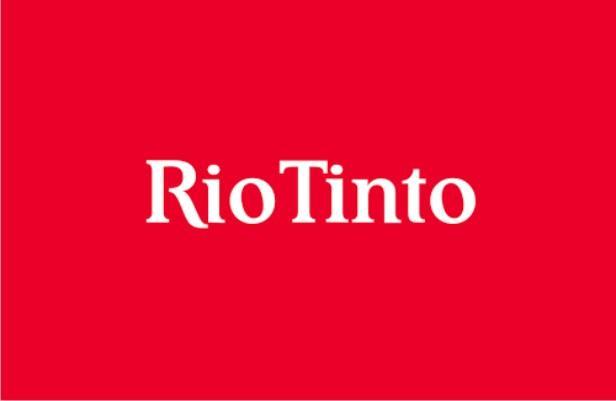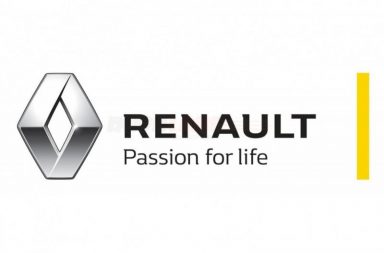Content
Holding balances with a gateway exposes the user to counterparty risk, a risk that is also present in the traditional banking system. If the gateway does not honor its liability, the user could lose the value of their money held at that gateway. Users that don’t trust a gateway can, therefore, transact with a trusted gateway that in turn deals with the “untrusted” gateway. This way the IOU will be transacted through the trusted, or creditworthy-certified, gateway. Counterparty risk does not apply to bitcoins (and most altcoins) because a user’s bitcoin is not another user’s IOU or liability. He began his financial writing career in 2005 as a marketing copywriter, which is how he refined his investing knowledge and skills.
It also means that the XRP consensus system consumes negligible amounts of energy as compared to Bitcoin, which is considered an energy hog. The company was founded as a peer-to-peer trust network that leveraged social media. Users within a network could bypass banks and make loans and open credit lines with each other. Defense attorneys from King & Spalding and Debevoise & Plimpton hemmed in the potential global scope of the class by convincing U.S.

Bitcoins are released and added to the network as and when miners find them. They do not adhere to a release schedule and their supply depends mostly on network speeds and difficulty of the algorithm used to mine coins. Ripple is the name of the company and network behind the XRP cryptocurrency. Ripple transactions use less energy than bitcoin, are confirmed in seconds, and cost very little, whereas bitcoin transactions use more energy, take longer to confirm, and include higher transaction costs. XRP is an interesting (albeit risky) crypto investment opportunity.
What is the Ripple XRP lawsuit?
This period was before Bitcoin, the world’s leading cryptocurrency, came into the spotlight. Ripple was later co-founded by Chris Larsen and Jed McCaleb in 2012. XRP is a cryptocurrency designed to be used for international payments and currency exchange.
If River wanted bitcoins as payment for the services rendered to Lawrence, Lawrence does not necessarily have to be in possession of any bitcoins. He can send the payment to his gateway in Canadian dollars (CAD), and River can receive bitcoins from his gateway. One gateway is not needed to initiate a complete transaction; multiple gateways can be used, forming a chain of trust rippling across the users. XRP is unique in that it’s intended for financial institutions and payment services, unlike other cryptocurrencies that are aimed at consumers. In using XRP, banks and other financial companies can transfer money without needing to pre-fund accounts in other countries or pay hefty foreign exchange fees.
Should You (or Anyone) Buy XRP?
RippleNet is a blockchain geared toward banking institutions that can be used to settle transactions like remittance payments, in addition to exchanging currencies. Mining is the process by which some blockchains verify transactions and create new coins. When a bitcoin miner’s computer verifies a transaction by solving a highly complex math problem, called a hash, the system generates new bitcoin and gives it to the miner as a reward. Bitcoin mining will continue this way, with the rewards getting progressively smaller, until the number of coins created reaches the 21 million maximum supply. With RippleNet, customers can quickly access new markets, expand their services and deliver the best customer experience in global payments today. XRP is faster, less costly and more scalable than any other digital asset, XRP and the XRP Ledger are used to power innovative technology across the payments space.
Each time a transaction is performed on the Ripple network, a small amount of XRP is charged to the user (individual or organization). Miners verify transactions on an ongoing basis and add them to the Bitcoin blockchain. In exchange for their time and the computing power necessary to validate the ledger in this way, miners are rewarded with BTC upon successfully validating transactions. Weiss Research, an investment research firm that rates cryptocurrencies, has given XRP an overall rating of “B-“, a technology and adoption rating of “B-“, and a market performance rating of “C-“. Like many things in life, there are some caveats, especially if you’re purchasing XRP with another crypto. A general rule of thumb is it’s easier to purchase a crypto with a fiat currency like the U.S. dollar compared with other cryptocurrencies.
Facts about XRP
© 2023 Market data provided is at least 10-minutes delayed and hosted by Barchart Solutions. Information is provided ‘as-is’ and solely for informational purposes, not for trading purposes or advice, and is delayed. To see all exchange delays and terms of use please see Barchart’s disclaimer. An interesting caveat is that dedicated XRP wallets require you to hold at least 10 XRP to activate your wallet on the XRP Ledger. For those of you who are new to XRP, don’t let the interchangeability of references to Ripple and XRP confuse you.
- XRP, like other coins, was not spared the routing, and is now trading at around $US.40—down from an all-time high of $3.84 in 2018.
- Ripple network transactions rely on a consensus protocol to validate account balances and transactions on the system.
- Well, it was initiated by a man called Jed McCaleb, who first came up with the idea.
The purpose of XRP is to serve as an intermediate mechanism of exchange between two currencies or networks—as a sort of temporary settlement layer denomination. Ripple was first released in 2012 and was co-founded by Chris Larsen and Jed McCaleb. Designed to make payment transactions faster and cheaper, XRP settles payments at a fraction of the cost of traditional methods. XRP is one of the more ambitious cryptocurrencies aimed at revolutionizing global payment systems and the digital economy. In spite of its many controversies, XRP remains one of the top cryptocurrencies by market cap. It can be used just like any other digital currency, for transactions or as an investment.
John Schmidt is the Assistant Assigning Editor for investing and retirement. Before joining Forbes Advisor, John was a senior writer at Acorns and editor at market research group Corporate Insight. His work has appeared in CNBC + Acorns’s Grow, MarketWatch and The Financial Diet.
Can you mine Ripple (XRP)?
Shortly thereafter, the trio were joined by Chris Larsen, and the group started the company NewCoin in September 2012, which was quickly renamed OpenCoin before settling on its current name, Ripple. Rather confusingly, Ripple is not involved in physically sending money from one place to another. This is a breath of fresh air for crypto advocates who are concerned about scalability issues, helping alleviate fears that blockchain networks will prove unable to cope with a considerable rise in demand. “The company has tried to reduce the uncertainty by implementing several mechanisms (trust, predictable release, etc.),” says Tim Enneking, principal of Digital Capital Management. That mining vs. pre-mining distinction may also be a reason for its 2020 conflict with the U.S. Faster processing is due to a short number of authorized validators by Ripple Labs and by its approval mechanism.
Still, Ripple uses XRP and XRP’s public blockchain to power its products. The XRP Ledger is decentralized, run by a global network of 150+ validators. Certain tokens sold by Dzengi Сom сlosed joint stock company may be of value only when using the information system of Dzengi Com CJSC and (or) the services rendered by Dzengi Com CJSC. The XRPL founders gifted 80 billion XRP, the platform’s native currency, to the company.
- To add insult to injury, banks’ outdated systems can also mean payments take several days to reach the recipient’s bank account.
- This way the IOU will be transacted through the trusted, or creditworthy-certified, gateway.
- Any unused portion of the XRP in a particular month will be shifted back to an escrow account.
- Another approximately 48% are held in a reserve for regular release into the market through sales.
For example, while new bitcoins are continuously mined, the maximum coin supply is limited to just 21,000,000. XRP, on the other hand, has a maximum supply of 100 billion coins, all of which have been created and half of which are in circulation. Instead of being completely decentralized like many cryptocurrencies, XRP uses a network of validators to confirm transactions. Each of these transactions is validated by the RippleNet network through a code. The code, in turn, is executed by validators previously chosen by the company.
Utility for the new global economy
Crypto markets went into a free-fall in May with billions of dollars wiped off in value and leading coin Bitcoin falling below the psychological barrier of $US20,000. XRP, like other coins, was not spared the routing, and is now trading at around $US.40—down from an all-time high of $3.84 in 2018. According to Crypto Assets Guy’s estimations, several key events could trigger a succession of price hikes for XRP, including the settlement of the ongoing legal battle between the U.S. Securities and Exchange Commission (SEC) and Ripple Labs, a major player in the XRP market. While Ripple works in a bit more complicated way, the above example explains its basic workings. The Ripple system scores better than the bitcoin network for its lower processing times and lower transaction charges.

Despite that, there are several reasons why you should invest in XRP. Some of these include the fact that XRP is among the most substantial coins by market capitalization, ahead of Cardano (XRP), Solana (SOL), and Polkadot (DOT). It can be a great store of value considering its efficiency in transaction execution and time and that XRP contributes to a greener environment compared to cryptocurrencies using proof of work. These reasons, among several factors, may contribute to XRP being a good investment. The initial idea behind XRP from the onset was straightforward and is described as a peer-to-peer trust network. Ripple cites XRP as a faster, cheaper, and more energy-efficient digital asset that can process transactions within seconds and consume less energy than some counterpart cryptocurrencies.
It allows this type of sector to conduct real-time transactions with less bureaucracy. Therefore, XRP has different attributes from other cryptocurrencies in the financial market. After all, most cryptos came into existence not to belong to the traditional financial system, but to dissociate itself from that. XRP was conceived by Ryan Fugger (developer) Jed MacCaleb (programmer) and Chris Larsen (businessman) in 2012.
It’s managed by Ripple Labs, an US private company, and its major target is to make transactions easier in banking. That last issue with XRP means that if you’re interested in buying any, the first step https://g-markets.net/helpful-articles/what-is-a-spread-trade/ is finding an exchange that sells it. Among the major crypto exchanges, Coinmama and KuCoin are two that offer XRP. Since XRP is Ripple’s cryptocurrency, buying XRP is a way of investing in Ripple.
